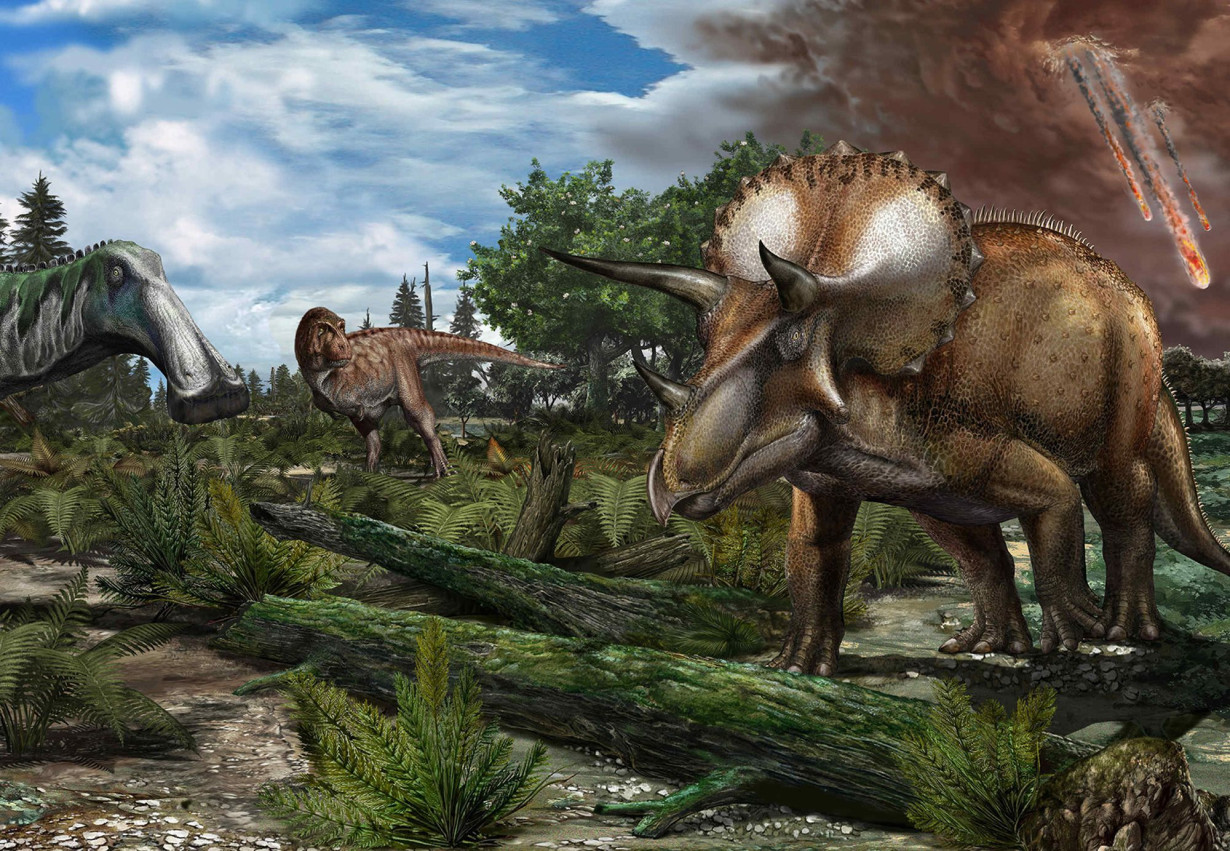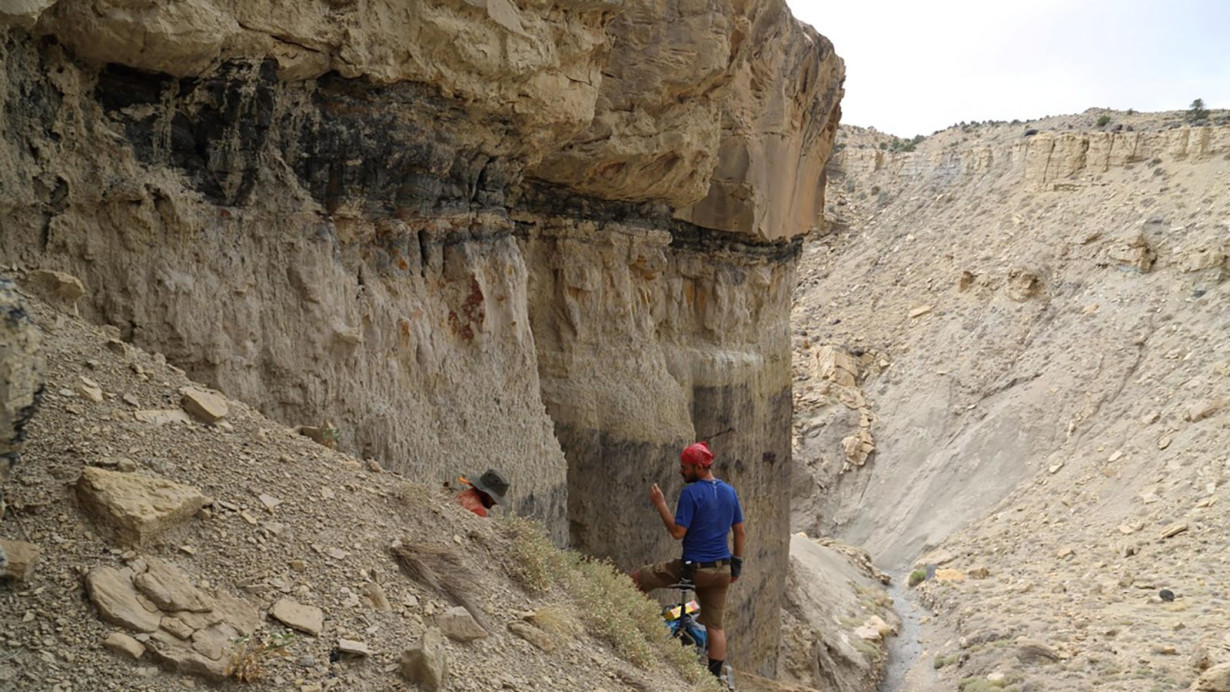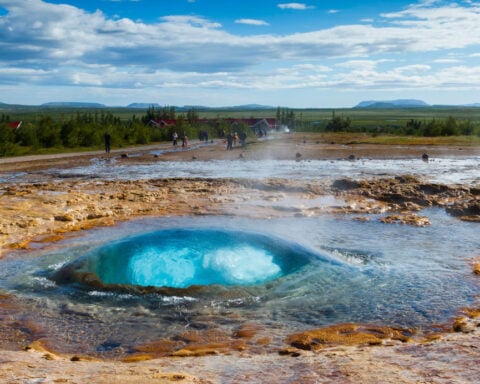(CNN) — It’s a long-standing debate in paleontology: Were dinosaurs thriving when an asteroid hit Earth one fateful spring day 66 million years ago, or were they already on their way out, and the space rock delivered a final, devastating blow?
To find answers, a team of researchers studied North America’s fossil record, focusing on the 18 million years before the mass extinction at the end of the Cretaceous period. The new analysis, published Tuesday in the journal Current Biology, adds to a growing body of evidence that the dinosaurs were doing just fine before the asteroid’s deadly impact.
However, at face value, the fossils available for study from this time — more than 8,000 — suggest the number of dinosaur species peaked about 75 million years ago and then declined in the 9 million years leading up to the asteroid strike.

“It comes down to the fossil record and its fidelity, or its quality. And so there’s been an awareness since the 1970s that the fossil record is not accurate, but it is a biased reflection in the past,” said lead study author Chris Dean, a research fellow in paleontology at University College London.
“It’s only in very recent years that we’ve started to see the full extent of (the bias issue), when using these large databases of fossil occurrences,” he said.
To understand better what was going on at the time of the dinosaurs’ demise, Dean and his colleagues turned to a statistical approach called occupancy modeling to estimate the probability of a dinosaur being present at a site. Used in present-day ecology and conservation, occupancy modeling aims to account for the fact that a species may be overlooked or not detected even when present in a particular area. This study marks the first time the approach has been used to look at dinosaurs and over a large scale, Dean said.
“Applying a new technique is really hard,” Dean noted. “I don’t think it will be the last word. I’m sure there’s a lot more to be said.”
For the new study, the researchers looked at four main dinosaur families: Ankylosauridae (armored plant-eating dinosaurs such as the club-tailed Ankylosaurus), Ceratopsidae (large three-horned herbivores including Triceratops), Hadrosauridae (duck-billed dinosaurs), and Tyrannosauridae (carnivores such as Tyrannosaurus rex).
“We looked at these bigger groupings so we could have more data, effectively,” Dean said. “We gridded up North America into a big spatial grid (and determined) the places where we can find fossils, (the places where we) have physically found fossils and how many times people have gone to look for fossils (in these places).”
The information was fed into a computer model, and Dean and his colleagues compared the physical fossil record with that proposed by the model and found a mismatch.
Filling in fossil record gaps
The model suggested that, during the 18 million-year time period in question, the proportion of land the four dinosaur clades likely occupied remained constant overall, suggesting their potential habitat area remained stable, and the risk of extinction stayed low.
One of the factors that could have clouded the true diversity patterns of dinosaurs was the lack of rock exposed at the Earth’s surface during that window of time — and thus available for fossil hunters today to scrutinize.
“In this study, we show that this apparent decline is more likely a result of a reduced sampling window, caused by geological changes in these terminal Mesozoic fossil-bearing layers — driven by processes such as tectonics, mountain uplift, and sea-level retreat — rather than genuine fluctuations in biodiversity,” said study coauthor Alfio Alessandro Chiarenza, a Royal Society Newton International Fellow at University College London’s department of Earth sciences, in a statement.
“Dinosaurs were probably not inevitably doomed to extinction at the end of the Mesozoic,” Chiarenza said. “If it weren’t for that asteroid, they might still share this planet with mammals, lizards, and their surviving descendants: birds.”
The study helped to highlight what biases may affect scientists’ understanding of the true pattern of dinosaur diversity leading up to the extinction event, said Darla Zelenitsky, a paleontologist at the University of Calgary in Alberta who wasn’t involved in the research.
“Because of the nature of the rock record, (paleontologists have) found it was more difficult to detect dinosaurs and thus understand their diversity patterns in that window of time just before the mass extinction,” she said.
“It certainly makes sense as we know there are biases related to the rock record that can obscure true biological patterns. The more rock that is exposed at the surface (today), the better our chance of finding dinosaurs in that rock, which in turn leads to a better understanding of their diversity patterns.”
Mike Benton, a professor of vertebrate paleontology at the UK’s University of Bristol, called the paper “thorough and detailed” but said it doesn’t prove there was no reduction in dinosaur diversity ahead of the extinction event. Benton’s work has suggested that dinosaurs were in decline before the asteroid wiped them out. He wasn’t involved in the new study.
“The current paper suggests that the ‘reduction’ can be explained as a statistical artefact,” Benton said via email. “What it shows is … simply that the reduction could be real or could be explained by reduced sampling, in my opinion.”
The-CNN-Wire
™ & © 2025 Cable News Network, Inc., a Warner Bros. Discovery Company. All rights reserved.

 Trump has begun another trade war. Here's a timeline of how we got here
Trump has begun another trade war. Here's a timeline of how we got here
 Canada's leader laments lost friendship with US in town that sheltered stranded Americans after 9/11
Canada's leader laments lost friendship with US in town that sheltered stranded Americans after 9/11
 Chinese EV giant BYD's fourth-quarter profit leaps 73%
Chinese EV giant BYD's fourth-quarter profit leaps 73%
 You're an American in another land? Prepare to talk about the why and how of Trump 2.0
You're an American in another land? Prepare to talk about the why and how of Trump 2.0
 Chalk talk: Star power, top teams and No. 5 seeds headline the women's March Madness Sweet 16
Chalk talk: Star power, top teams and No. 5 seeds headline the women's March Madness Sweet 16
 Purdue returns to Sweet 16 with 76-62 win over McNeese in March Madness
Purdue returns to Sweet 16 with 76-62 win over McNeese in March Madness








